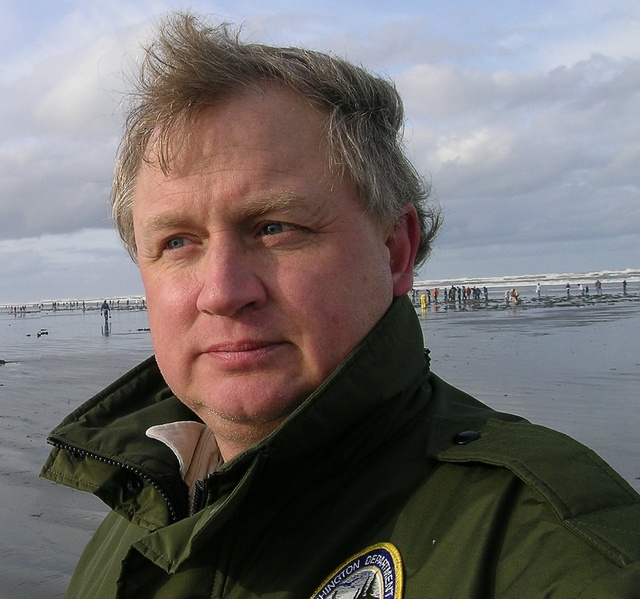State shellfish managers still hope to move forward with three days of digging (Nov. 17-19) at three Washington ocean beaches, pending the results of further testing for domoic acid.
A natural toxin produced by certain types of algae, domoic acid can be harmful or even fatal if consumed in sufficient quantities.
To the far south on the coast, Neither Long Beach nor Twin Harbors have met state public health standards for toxins. However, toxin levels along the northern coast, at Copalis and Mocrocks digging areas locally, have consistently met state health standards in recent months.
Twin Harbors could be in the clear for the Nov. 17 opening if additional testing shows toxin levels have dropped, said Dan Ayres, coastal shellfish manager for WDFW.
On Nov. 7, test results from Long Beach indicated toxin levels there remain too high for the beach to be considered for the Nov. 17 opening, Ayres said.
Levels of domoic acid have been elevated for several weeks along Washington’s southern coast, at Long Beach and Twin Harbors. Both Copalis and Mocrocks are also being considered for the Nov. 17 opening by WDFW.
“We’re optimistic that we’ll be able to open at least a few of the beaches on Nov. 17,” Ayres said.
Ayres anticipates announcing test results by Nov. 15. Diggers should check WDFW’s webpage .
Domoic acid has posed a problem for Washington’s razor clam fisheries over the last 18 months. Elevated toxin levels have prompted WDFW to occasionally close beaches to digging.
“We’re off to a bit of rocky start with this fall’s razor clam digs,” Ayres said. “But we’ll give the green light on digs as soon as we know the clams are safe to eat.”



